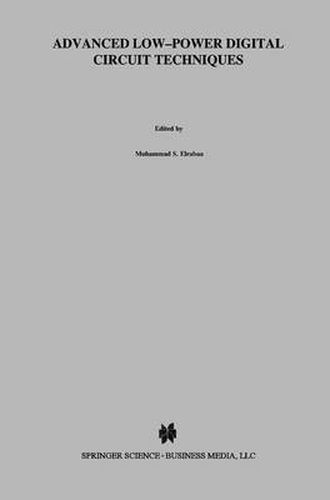Readings Newsletter
Become a Readings Member to make your shopping experience even easier.
Sign in or sign up for free!
You’re not far away from qualifying for FREE standard shipping within Australia
You’ve qualified for FREE standard shipping within Australia
The cart is loading…






This title is printed to order. This book may have been self-published. If so, we cannot guarantee the quality of the content. In the main most books will have gone through the editing process however some may not. We therefore suggest that you be aware of this before ordering this book. If in doubt check either the author or publisher’s details as we are unable to accept any returns unless they are faulty. Please contact us if you have any questions.
Presenting a number of high performance digital circuit designs that emphasize low-power and low-voltage operation, this text shows a wide range of circuits used in current VLSI systems. Each chapter contains a brief introduction that serves as a quick background and gives the motivation behind the design. Each chapter also ends with a summary that briefly explains the contributions contained therein. Examples of circuits used in systems where low-power is important from reliability and portability points of view (such as general-purpose and DSP processors) are presented in Chapters 2, 3 and 4. Chapters 5 and 7 give examples of circuits used in systems where reliability and more system integration are the main driving forces behind lowering the power consumption. Chapter 6 gives an example of a general purpose high-performance low-power circuit design. Advanced Low-Power Digital Circuit Techniques is a real designer’s book. It investigates alternative circuit styles, as well as architectural alternatives, and gives quantitative results for comparison in realistic technologies. Several of the circuits presented have been fabricated so that simulations can be checked. The circuits covered are the most important building blocks for many designs, so the text will be of direct use to designers. MOS designs are covered, as well as BiCMOS, and there are several novel circuits.
$9.00 standard shipping within Australia
FREE standard shipping within Australia for orders over $100.00
Express & International shipping calculated at checkout
This title is printed to order. This book may have been self-published. If so, we cannot guarantee the quality of the content. In the main most books will have gone through the editing process however some may not. We therefore suggest that you be aware of this before ordering this book. If in doubt check either the author or publisher’s details as we are unable to accept any returns unless they are faulty. Please contact us if you have any questions.
Presenting a number of high performance digital circuit designs that emphasize low-power and low-voltage operation, this text shows a wide range of circuits used in current VLSI systems. Each chapter contains a brief introduction that serves as a quick background and gives the motivation behind the design. Each chapter also ends with a summary that briefly explains the contributions contained therein. Examples of circuits used in systems where low-power is important from reliability and portability points of view (such as general-purpose and DSP processors) are presented in Chapters 2, 3 and 4. Chapters 5 and 7 give examples of circuits used in systems where reliability and more system integration are the main driving forces behind lowering the power consumption. Chapter 6 gives an example of a general purpose high-performance low-power circuit design. Advanced Low-Power Digital Circuit Techniques is a real designer’s book. It investigates alternative circuit styles, as well as architectural alternatives, and gives quantitative results for comparison in realistic technologies. Several of the circuits presented have been fabricated so that simulations can be checked. The circuits covered are the most important building blocks for many designs, so the text will be of direct use to designers. MOS designs are covered, as well as BiCMOS, and there are several novel circuits.